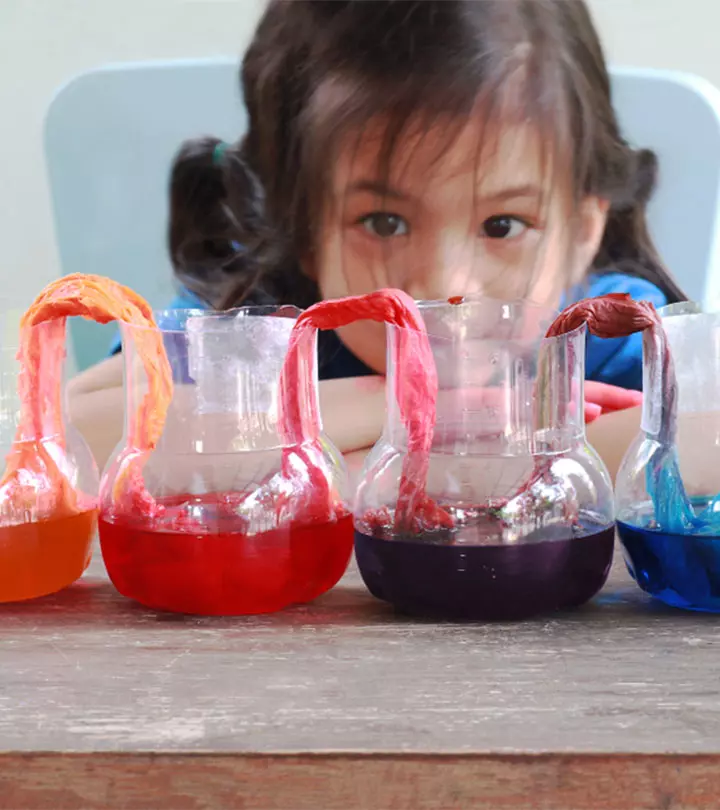
Image: Shutterstock
As a parent, you wield a remarkable influence over your child’s future, and one of the most dynamic and transformative paths is paved by STEM learning. STEM, stands for Science, Technology, Engineering, and Mathematics. It encapsulates competencies and insights that are progressively indispensable in our contemporary society. Fostering a passion for STEM from the outset establishes a strong bedrock for your child’s personal evolution and advancement. In this article, we’ll journey into the realm of STEM learning, unveil the onset of these aptitudes in children, and delve into strategies to cultivate their curiosity and potential effectively. Read on!
What Is Stem Learning?
STEM learning integrates science, technology, engineering, and mathematics in a unified approach. It cultivates critical thinking, problem-solving, creativity, and collaboration skills. Beyond career preparation, STEM fosters a lifelong love for learning and confident challenge tackling. Encouraging problem analysis, hands-on experiments, creative thinking, and teamwork, STEM empowers curiosity, adaptability, and resilience. It nurtures a comprehensive world understanding and prepares individuals to excel across diverse fields.
When Do Children Begin Developing Stem Skills?
Image: Shutterstock
STEM skills can be nurtured from a very young age. Even before formal education begins, children are naturally curious and eager to explore the world around them. They instinctively inquire, experiment, and seek solutions to their questions. This inherent curiosity forms the foundation of STEM learning, and parents can play a vital role in nurturing these skills from infancy.
How Can We Help Children Develop Stem Skills?
1.Encourage Exploration
Supporting your child’s innate curiosity is a wonderful way to foster STEM skills. Take them on outings to parks, nature reserves, or even local museums where they can observe the natural world and its phenomena. Encourage them to ask questions about what they see – this prompts them to think critically and opens avenues for learning. Even simple walks around your neighborhood can turn into opportunities for exploration as they discover different plants, insects, and changes in the environment. Providing them with a magnifying glass or a small notebook to record their observations can add an extra layer of excitement to their exploration.
2.Ask Open-Ended Questions
Image: Shutterstock
Engaging your child in thoughtful conversations can stimulate their cognitive development. Instead of providing direct answers to their questions, ask open-ended queries that encourage them to think more deeply. For example, if they ask why the sky is blue, you might respond with, “What do you think causes the sky to have different colors?” This approach encourages them to ponder and develop their ideas, promoting creative thinking and problem-solving skills. These discussions can happen anywhere – during meal times, car rides, or simply while playing together.
3.Provide Hands-On Experiences
Hands-on experiences are at the heart of effective STEM learning. Encourage your child to engage in activities that involve building, experimenting, and problem-solving. Provide them with age-appropriate building materials like blocks, puzzles, or construction sets that allow them to create and explore. If something breaks around the house, involve them in the process of fixing it. This not only teaches them about mechanics but also nurtures a mindset of curiosity and resourcefulness. Activities like baking, gardening, or crafting also offer opportunities for hands-on exploration, as they learn about measurements, materials, and cause-and-effect relationships.
Where To Start?
The journey of cultivating STEM excitement begins with recognizing that learning is all around us. Everyday experiences offer opportunities to explore, question, and discover. As a parent, you can start by observing your child’s interests and finding ways to incorporate STEM elements into those interests.
Incorporate Stem Learning At Home
Image: Shutterstock
1.Magnatiles
The magnetic building tiles are a fantastic way to introduce engineering and creativity. Children can experiment with different structures, learning about balance, stability, and design.
2.Wooden Blocks
Basic wooden blocks are timeless tools for teaching concepts of physics and architecture. Encourage your child to build towers, bridges, and other structures.
3.Books
Reading books about science, nature, and technology opens up new worlds of knowledge and curiosity. Choose age-appropriate books that pique their interest and spark discussions.
Other Things You Can Do
Image: Shutterstock
1.Experiment With What You Have
Encourage simple experiments using household items. For instance, you can mix colors with food coloring, water, and clear glasses to teach about basic chemistry.
2.Count Things You See
Whether you’re walking outside or exploring indoors, counting objects like trees, cars, or toys can turn into an engaging math activity.
3.Give Them Things To Tinker With
Provide tools like screws, nuts, bolts, and old appliances for your child to take apart and investigate. This hands-on tinkering builds problem-solving skills.
Cultivating early excitement for STEM learning is a lasting gift. Their growing curiosity will lead them to explore complex questions. Embracing STEM education nurtures lifelong skills for education and careers.
Remember, the journey matters as much as the destination. Encourage exploration, learn from mistakes, and foster a love for learning beyond classrooms. By instilling a passion for STEM early on, you empower them to navigate a tech-driven world. Embark on this journey of discovery together, embracing a world of endless possibilities. Let us know in the comments how you would like to cultivate STEM learning experiences in your child!
















